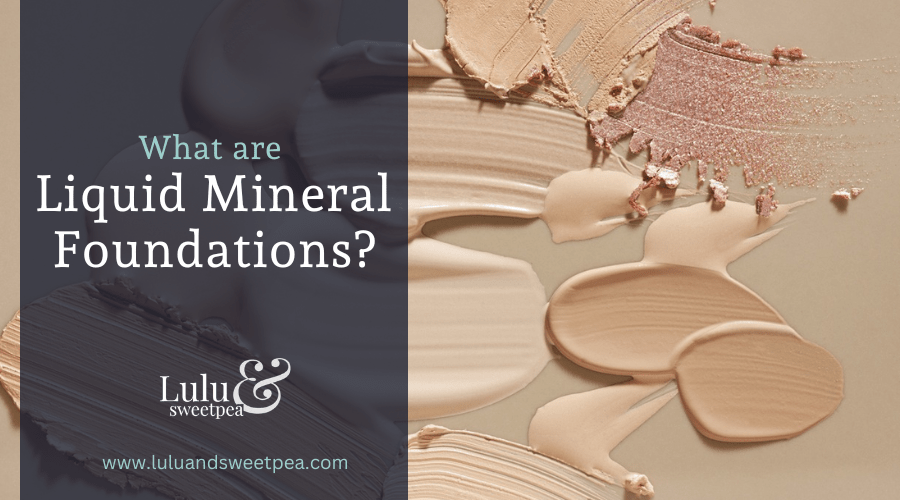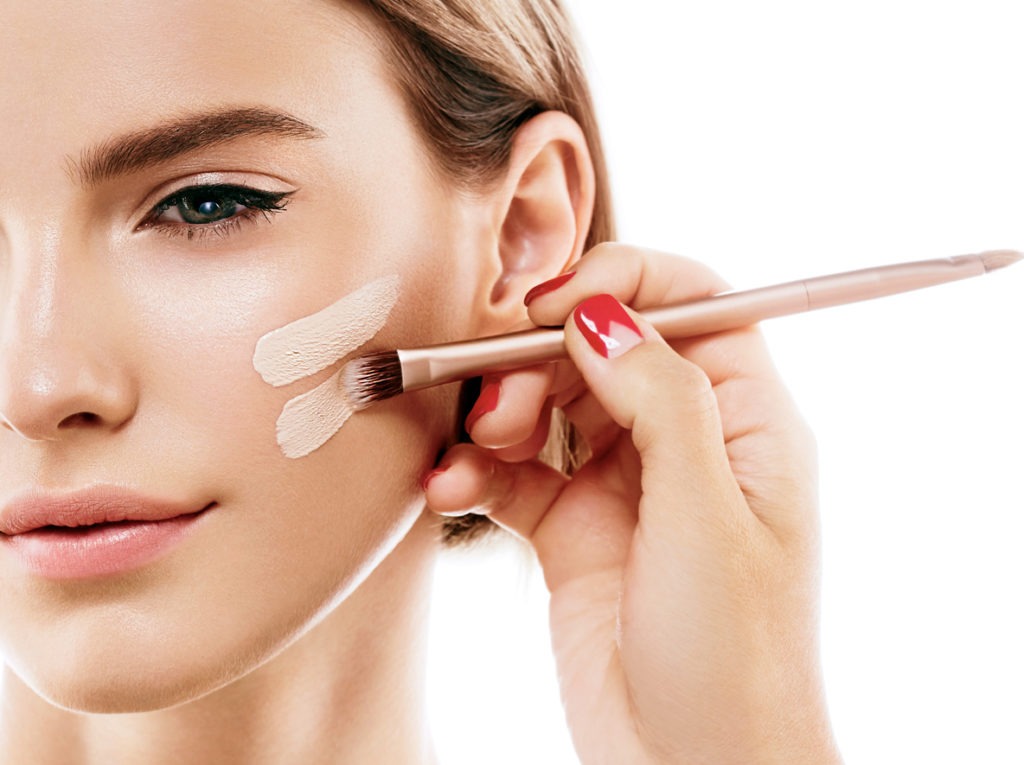When it comes to your skin, foundation is a beauty item that can do wonders. In just one simple step, it could balance out skin tone, conceal imperfections, and give you an all-over glow. There are several foundation alternatives available, ranging from radiance-enhancing liquids, powders, and creams to skincare-infused formulations. In this article, we’re going to help you know and understand more about liquid mineral foundations.
What is Mineral Makeup?
Mineral makeup is a highly suggested alternative to traditional makeup because it is more natural and less harmful to our skin.
But what exactly is mineral makeup? Iron, mica, and zinc oxides are a few examples of the natural earth minerals used in mineral makeup. Manufacturers ground up these minerals into a powder and this powder is then essentially transformed into the makeup we now use.
Although some of these minerals may also be found in traditional makeup, the key distinction between mineral makeup and traditional makeup is that while the latter contains additional ingredients, the former contains just those minerals.
The following minerals are typically found in mineral makeup: (1) iron oxides to complement various skin tones and types; (2) zinc oxide as a natural sunscreen and antioxidant; (3) mica powder to add that lovely sheen; and (4) titanium dioxide, a natural pigment that doubles as a sunscreen.
Benefits of Mineral Makeup
1. Good for Oily Skin
Mineral makeup is also a great option if you have oily skin and struggle to maintain to keep your face matte because the natural minerals absorb oils and let your skin breathe. While many products have a shimmering effect, this does not mean that they are greasy, and there are products available that are specifically made for oily skin.
2. Good for Sensitive Skin
For those with sensitive skin, acne, eczema, psoriasis, or other skin disorders, mineral makeup is the ideal option. It won’t clog pores or trigger breakouts because it is non-comedogenic.
3. Protects Skin from Sun Damage
The fact that mineral makeup contains natural sunscreen as a component (zinc oxide or titanium dioxide) is among its most amazing advantages. This indicates that you are shielding your skin from harmful sun damage just by wearing it. Additionally, the environment will appreciate you since coral reefs are typically harmed by chemical sunscreens, which you should try to avoid using.
4. It’s Lightweight and Breathable
The majority of us have encountered the icky feeling and appearance of cakey makeup. Fortunately, mineral makeup completely prevents this because it’s natural and feels like a part of your skin rather than a mask. All day long, your skin can breathe while still benefiting the anti-aging advantages of cosmetics. And finally, mineral makeup is really easy to take off. You won’t require tissues or harsh cleansers.
5. Makes Skin Look Healthy and Beautiful
Mineral makeup can really help minimize the appearance of fine lines and wrinkles, whereas many traditional makeup products, like foundations or powders, might accentuate them. The same holds true for any other imperfections, such as acne or blemish spots. Most women seek for a youthful appearance, and mineral makeup gives your skin that healthy, natural look.
Liquid vs. Powder Foundations
1. Type of Formula
The type of formula is the primary distinction between a liquid foundation and a powder foundation.
A water- or silicone-based thin formula makes up liquid foundations. Although there are many various kinds of silicones used in foundations, dimethicone, cyclomethicone, and cyclopentasiloxane are some of the most common ones.
Talc, a type of powder, is used to make foundation products that are powder-based. Excessive use of powder foundation can cause it to settle into fine lines and wrinkles, emphasizing the skin’s texture.
2. Level of Coverage
Compared to powder foundations, liquid foundations provide far more coverage. With just one application of the product, a liquid foundation can conceal imperfections and blemishes.
A powder foundation gives the skin a natural-looking, better-looking covering that is lightweight and breathable. Although powder foundation can offer full coverage, doing so would necessitate applying numerous coats, giving the skin a cakey appearance.
3. Application
Liquid foundation is easier to blend than powder foundation, making it ideal for makeup newbies. Using a kabuki brush, a cosmetic sponge, or your fingers, liquid foundation can be applied with ease. A liquid foundation gives the skin the most natural appearance when applied with a makeup sponge. To keep the foundation from appearing cakey, sponges absorb any extra product.
On the other hand, a powder foundation that has been improperly blended might result in an uneven distribution of pigment and give the skin a patchy appearance. Fortunately, due to the fact that makeup application improves with experience, this is not a major problem. Applying makeup in the morning, however, may take longer because powder foundation is applied in numerous, light layers, especially if you want to attain full coverage.
4. Type of Finish
Liquid foundations can give the skin a satin, matte, or dewy look depending on the formula.
Both powder and liquid foundations can have matte finishes, however powder foundations tend to edge out liquid foundations by a small margin.
5. Packaging
Powder foundations are portable due to their compact shape. With powder foundation, you can achieve a flawless complexion while on the go because touch-ups are easier.
On the other hand, some products containing loose powder can be messy. Re-applying could be a bit of a challenge.
Liquid vs. Cream Foundations
1. Definition
Liquid foundations come in a variety of tints, textures, and formulations and provide the skin a flawless finish.
On the other hand, cream foundations add an even finish and a silky texture to your skin while providing medium to full coverage.
2. Texture
Liquid foundations come in sheer, medium, and full coverage options with natural, dewy, and matte finishes.
While the texture of cream foundations is luxuriant, resembling a thick, creamy night cream.
3. Skin Type
Although liquid foundations work well for both dry and oily skin types, cream foundations work best for dry skin.
4. Type of Finish
Liquid foundation offers a matte and dewy finish while cream foundation offers a matte finish.
5. Application
In applying liquid foundation, your t-zone, which includes your nose, forehead, areas next to your nose, and chin, should be dabbed with foundation before being gently blended with a brush.
On the other hand, use a moist sponge to apply the product evenly across your face, then blend with your fingertips for a sheer, natural finish. Apply the cream foundation with a brush rather than a sponge if you want medium coverage.
Pros and Cons of Liquid Foundation
Oil, silicone, or water are the three different types of bases for liquid foundations. Certain liquid foundations, such as BB creams, may also include sun protection.
PROS
- Buildable Coverage: They provide buildable light to full coverage and can conceal blemishes with just one coat of foundation.
- Suitable for All Skin Types: Additionally, liquid foundations work for all types of skin, so there is something for everyone. People with oily skin, for instance, prefer liquid foundations with satin or matte textures. While people with dry skin, on the other hand, seek out foundations with a dewy effect.
- Hydrating: Hyaluronic acid or glycerin, two moisturizing substances, may be included in liquid foundations. They offer the skin a radiant appearance and don’t settle into wrinkles or fine lines. A liquid foundation that is lightweight and hydrating can be the ideal foundation for winter because it keeps the skin hydrated on cold days.
- Easy to Blend: On the skin, liquid foundations are easy to apply and blend. You can use your fingers, a kabuki brush, or a makeup sponge to apply liquid foundation. For the most natural-looking makeup, use a beauty sponge to apply liquid foundation. Sponges are best for absorbing any excess product keeping the foundation from looking cakey.
CONS
- Shiny and Greasy Skin: During the summer, liquid foundations can give the skin an extremely shiny and greasy appearance.
- Creases: Full coverage foundations, whether high end or inexpensive, can also crease into wrinkles and fine lines.
- Patchy-looking Skin: A liquid foundation can separate and appear uneven on the skin when applied with the wrong skincare or primer.
Things to Consider When Purchasing Liquid Mineral Foundation
Transitioning from traditional makeup to natural makeup that is healthier and doesn’t harm the skin is easier than you might think. Making the switch to mineral cosmetics is among the best decisions you can make for your skin. The following are the important considerations you should take into account when looking for the perfect liquid mineral foundation:
- Skin Type: Pick a liquid mineral foundation that has a formula that works best for your skin when making your selection. For instance, pick a foundation that is creamy and infused with hydrating ingredients if you have dry skin.
- Undertone: The veins on your wrists can indicate the undertone of your skin. You likely have warm undertones if the veins on your wrists are olive in color. Your undertones are cool if they are bluish or purplish in color. You have neutral undertones if they are blue-green. Then after you determine the undertone of your skin, the next step is to choose a liquid mineral foundation that complements your undertones.
- Coverage: There are three types of coverage available: light, medium, and full. If you want to cover everything, such as acne and dark spots on your face, it is recommended that you opt to purchase a liquid foundation that offers full coverage.
- Compatibility: It is important to read the ingredients in addition to finding your preferred tint and formula. Find a foundation with ingredients like salicylic acid if your skin is prone to acne. Find a product that can help keep your skin moisturized if you have dry skin. And if you frequently go outside, it is best to pick one with at least SPF 15.
Conclusion
Investing in a good liquid mineral foundation is important because you are applying this to your skin. Make sure the product you’re using won’t irritate your skin and that it is safe before applying it. Additionally, always test any skin care product on a small area of your skin before actually using it to see how your skin will react. Remember that not all skin types are the same, and it will take some time and effort to determine the product that will work best for your skin type and personal preferences.



